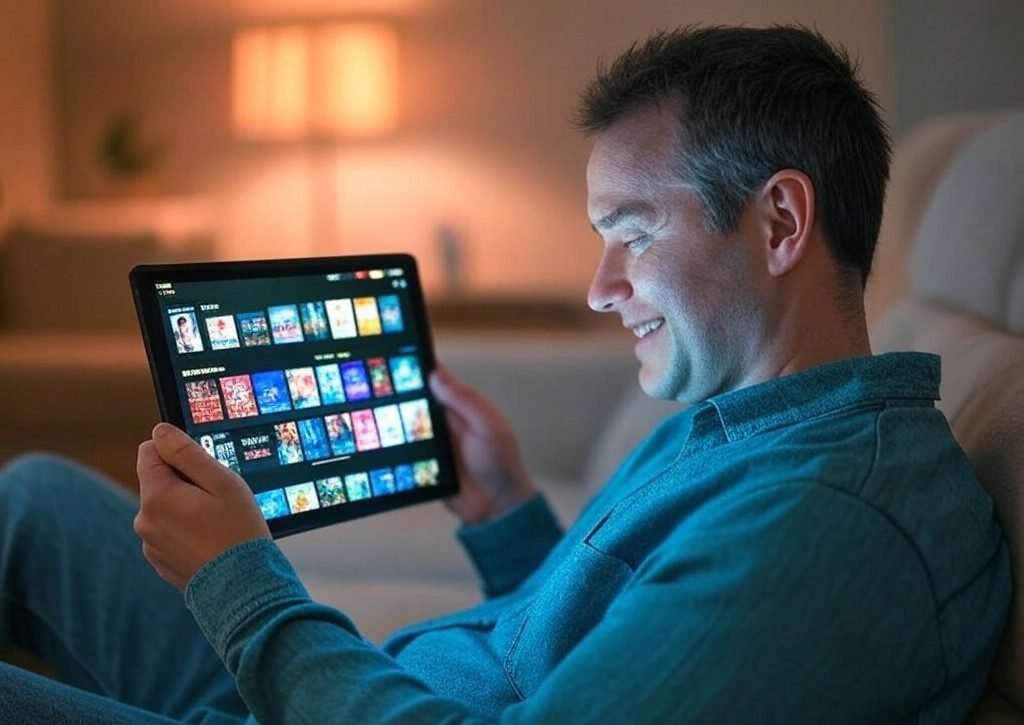The way we consume entertainment has undergone a seismic shift in the last decade. Gone are the days of sitting through endless commercials or planning your day around a favorite TV show’s airtime. Streaming services have taken over, offering a buffet of content available anytime, anywhere. They’ve revolutionized not just how we watch but also what we watch. With platforms like Netflix, Disney+, Hulu, and Amazon Prime leading the charge, the entertainment industry has changed forever.
How did streaming services go from being a niche convenience to the dominant force in entertainment? Let’s dive into their meteoric rise, explore their impact on culture and business, and see what lies ahead in this ever-evolving landscape.
The Birth of Streaming: From DVDs to Data
The streaming revolution began quietly. Before Netflix became synonymous with binge-watching, it was a DVD rental company. Founded in 1997, Netflix mailed DVDs to your doorstep, challenging brick-and-mortar giants like Blockbuster. But as internet speeds increased and technology improved, the company pivoted in 2007, launching its streaming service. At first, the catalog was limited, but it planted the seeds of a digital entertainment revolution.
By the early 2010s, other companies noticed the potential. Hulu debuted in 2008, initially as a way to stream network TV shows online. Amazon followed with its Prime Video service, bundling streaming with its popular shopping subscription. These early players set the stage for a fierce competition that would redefine entertainment.
Why Streaming Triumphed Over Cable
The success of streaming services boils down to two words: convenience and control. Cable television, with its rigid schedules and bundled packages, couldn’t compete. Why pay for 200 channels when you only watch five? Streaming allowed viewers to customize their experience. With on-demand content, no one had to wait until 8 PM to catch the latest episode of a hit show.
Price also played a huge role. Cable packages often cost upwards of $100 a month, while streaming subscriptions started at $7.99. It wasn’t just about cutting costs; it was about getting more for less. For younger generations who grew up with YouTube and smartphones, the ability to watch what they wanted, when they wanted, was a no-brainer.
The Golden Age of Content Creation
As streaming services grew, so did their ambitions. It wasn’t enough to license content from networks and studios. Platforms like Netflix and Amazon Prime began producing their own shows and movies. This move into original programming marked a turning point, ushering in what many call the “Golden Age of Streaming.”
Think about the cultural phenomena created by streaming originals. Netflix’s Stranger Things became a worldwide obsession, while Amazon’s The Marvelous Mrs. Maisel swept award shows. Disney+ revived the Star Wars franchise with The Mandalorian, and Apple TV+ found a surprise hit in Ted Lasso. These platforms weren’t just distributors; they became tastemakers.
The shift also empowered creators. Without the constraints of traditional TV networks, storytellers could experiment with new formats, diverse casts, and bold ideas. Shows like The Crown or Bridgerton might never have thrived on traditional TV, but streaming gave them a platform to shine.
How Streaming Reshaped Our Viewing Habits
Streaming didn’t just change what we watch—it changed how we watch. Binge-watching is now a cultural norm, a term that didn’t even exist a decade ago. Instead of waiting a week for the next episode, audiences devour entire seasons in one sitting. This new behavior has redefined storytelling, with creators designing shows that encourage marathon viewing.
But there’s a downside to the convenience of streaming. With so much content at our fingertips, the dreaded “choice paralysis” has become real. How many times have you spent more time scrolling through options than actually watching something? The phrase “Netflix and chill” might be synonymous with relaxation, but let’s be honest—sometimes it’s a stressful endeavor just picking a show.
The Dark Side of Streaming: Oversaturation and Competition
While the rise of streaming brought undeniable benefits, it also introduced challenges. As more players entered the market, the streaming wars began. HBO Max, Peacock, Paramount+, and others launched their own platforms, each vying for a slice of the pie. What started as a way to simplify entertainment became more fragmented. Want to watch The Office? That’s on Peacock now. Love Marvel movies? You’ll need Disney+. Fans who cut the cord to escape cable bundles now find themselves juggling multiple subscriptions.
This oversaturation has led to what many call “subscription fatigue.” The cost of subscribing to several services can quickly rival or even exceed traditional cable bills. Additionally, exclusive content deals mean some shows or movies are locked behind paywalls, forcing viewers to make tough choices.
Streaming’s Impact on Hollywood and Beyond
The rise of streaming hasn’t just affected viewers; it’s transformed the entertainment industry from top to bottom. Theaters, for example, have faced significant challenges. The COVID-19 pandemic accelerated the trend of releasing films directly to streaming, a move that studios like Warner Bros. and Disney embraced with major releases like Wonder Woman 1984 and Black Widow. While theaters are far from extinct, their dominance has undeniably waned.
Streaming has also democratized global entertainment. Platforms like Netflix and Amazon are investing heavily in international content, introducing global audiences to shows like Money Heist from Spain or Squid Game from South Korea. This globalization has broadened horizons, giving viewers access to stories and cultures they might never have encountered otherwise.
What Does the Future Hold for Streaming?
As streaming continues to evolve, several trends are emerging. For one, ad-supported models are making a comeback. Services like Hulu and Peacock offer cheaper, ad-supported tiers, appealing to budget-conscious consumers. Meanwhile, live-streaming is becoming a major focus, with platforms exploring live sports, concerts, and events.
Technology will also play a key role. Advances in artificial intelligence and algorithms will make content recommendations even more precise. Virtual reality (VR) and augmented reality (AR) could usher in new ways to experience entertainment, blurring the lines between watching and participating.
But perhaps the biggest question is how streaming services will adapt to the changing tastes of their audiences. As competition heats up, innovation will be key. Whether it’s through groundbreaking content, better user experiences, or entirely new formats, the race to capture our attention is far from over.
Conclusion
Streaming services have transformed entertainment in ways that were unimaginable just a decade ago. They’ve given us control, spoiled us with choices, and brought the world’s stories to our fingertips. But they’ve also introduced new challenges, from subscription fatigue to an oversaturated market.
As we look to the future, one thing is clear: streaming is here to stay. The platforms that adapt, innovate, and truly understand their audiences will continue to thrive. For viewers, it’s an exciting time. Whether you’re a fan of gripping dramas, laugh-out-loud comedies, or eye-opening documentaries, there’s never been a better era to be entertained.
FAQs
1. How do streaming services decide what content to create?
Streaming platforms rely on viewer data and analytics to identify trends and preferences. They use this information to develop original programming tailored to their audience.
2. Are streaming services cheaper than cable?
While streaming was initially more affordable, the rise of multiple subscriptions has narrowed the cost gap. However, viewers still have more control over their spending compared to cable.
3. Will streaming replace movie theaters entirely?
Unlikely. While streaming has reduced theater dominance, cinemas still offer a unique, communal experience for blockbuster films. The two will likely coexist.
4. How has streaming affected traditional TV networks?
Many networks have launched their own streaming platforms to stay competitive. However, traditional TV has seen a decline in viewership as audiences shift to on-demand content.
5. What’s the next big thing in streaming?
Live streaming of sports and events, integration with VR/AR, and hyper-personalized recommendations are expected to shape the next phase of streaming evolution.





